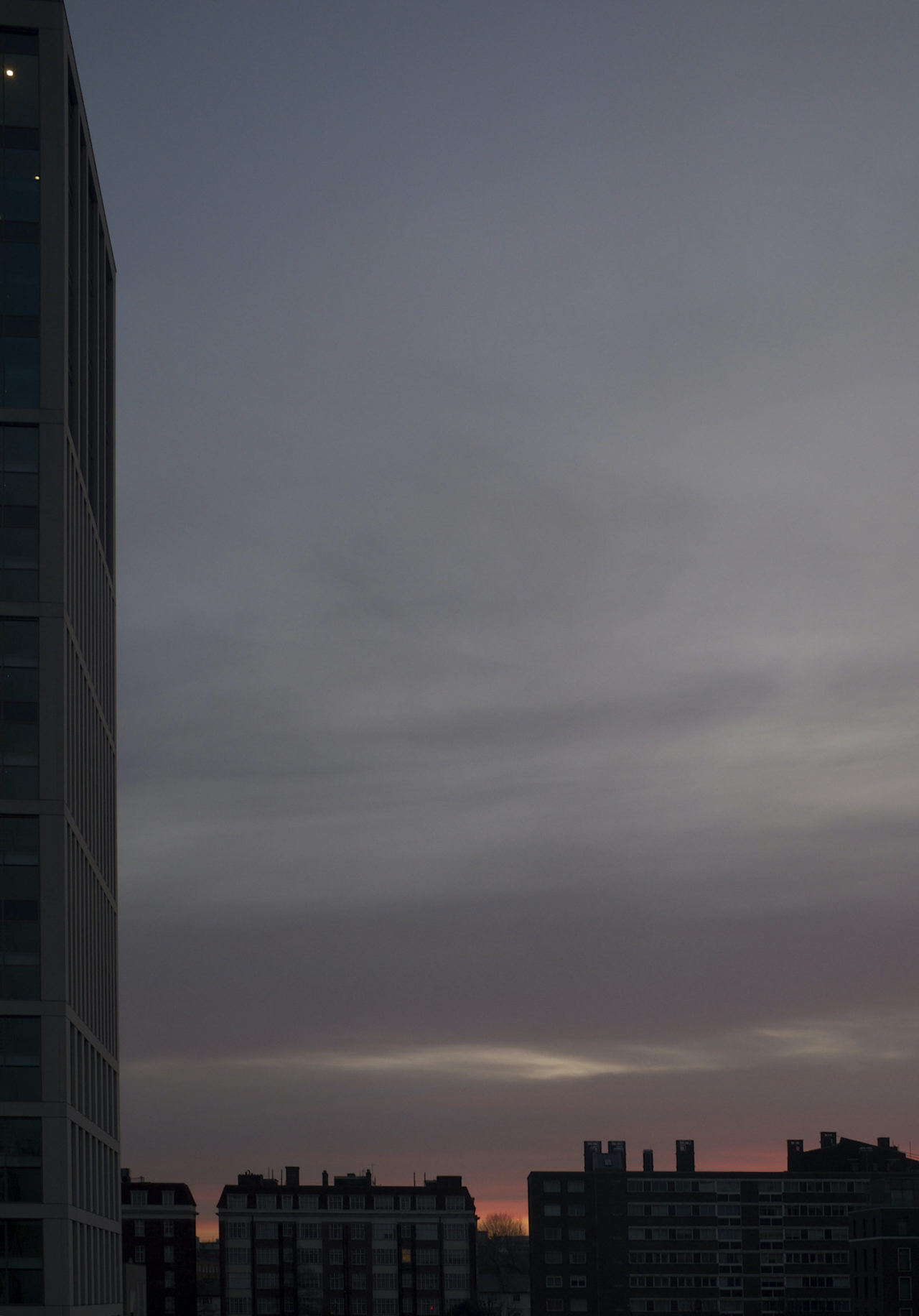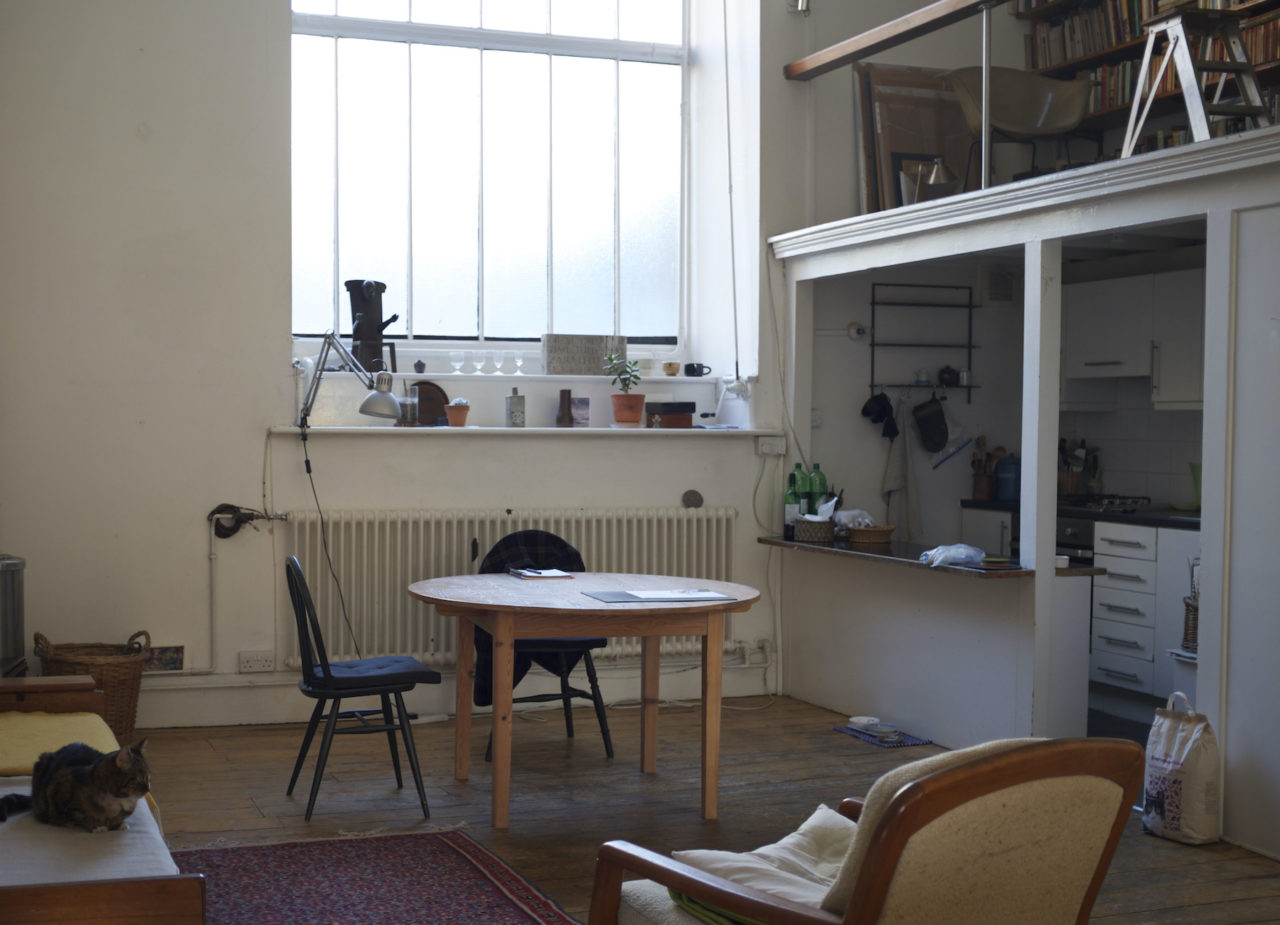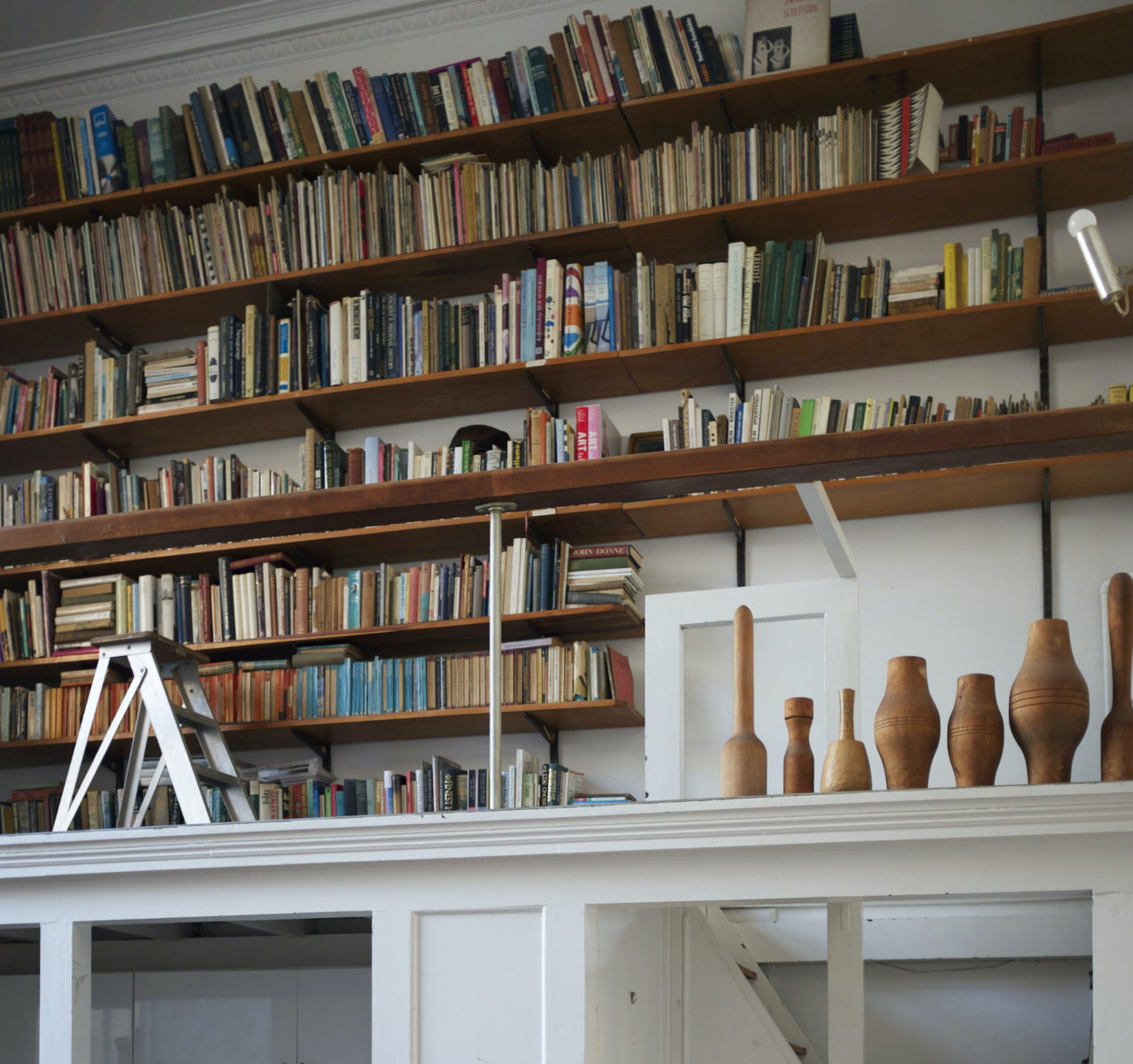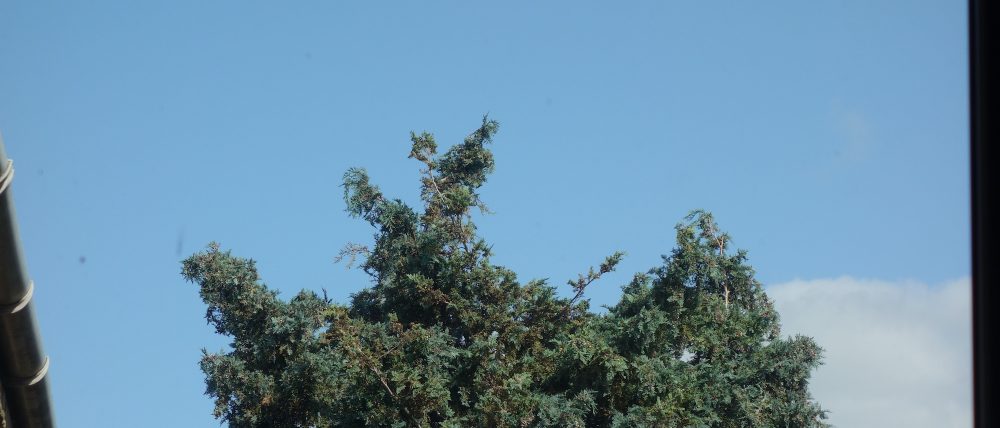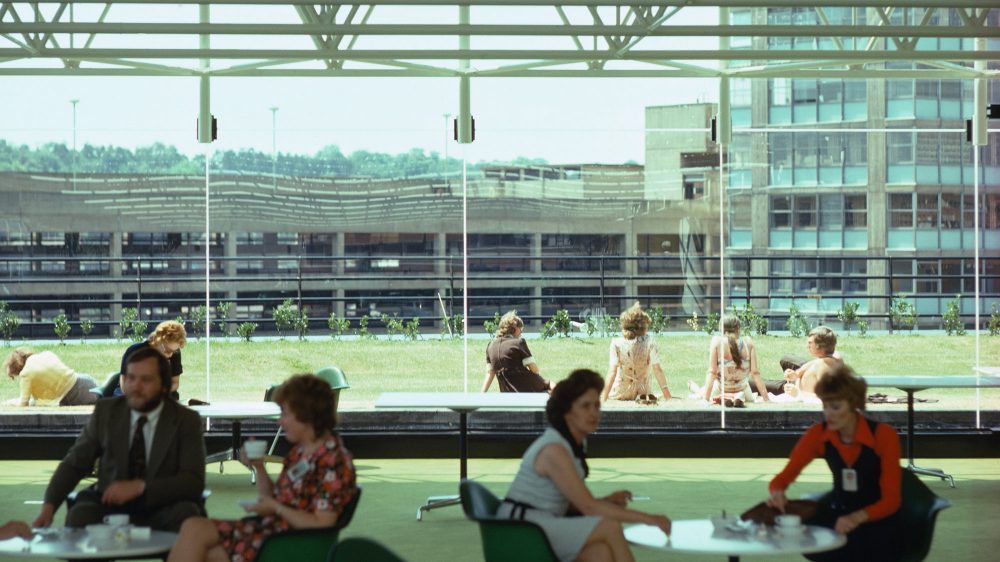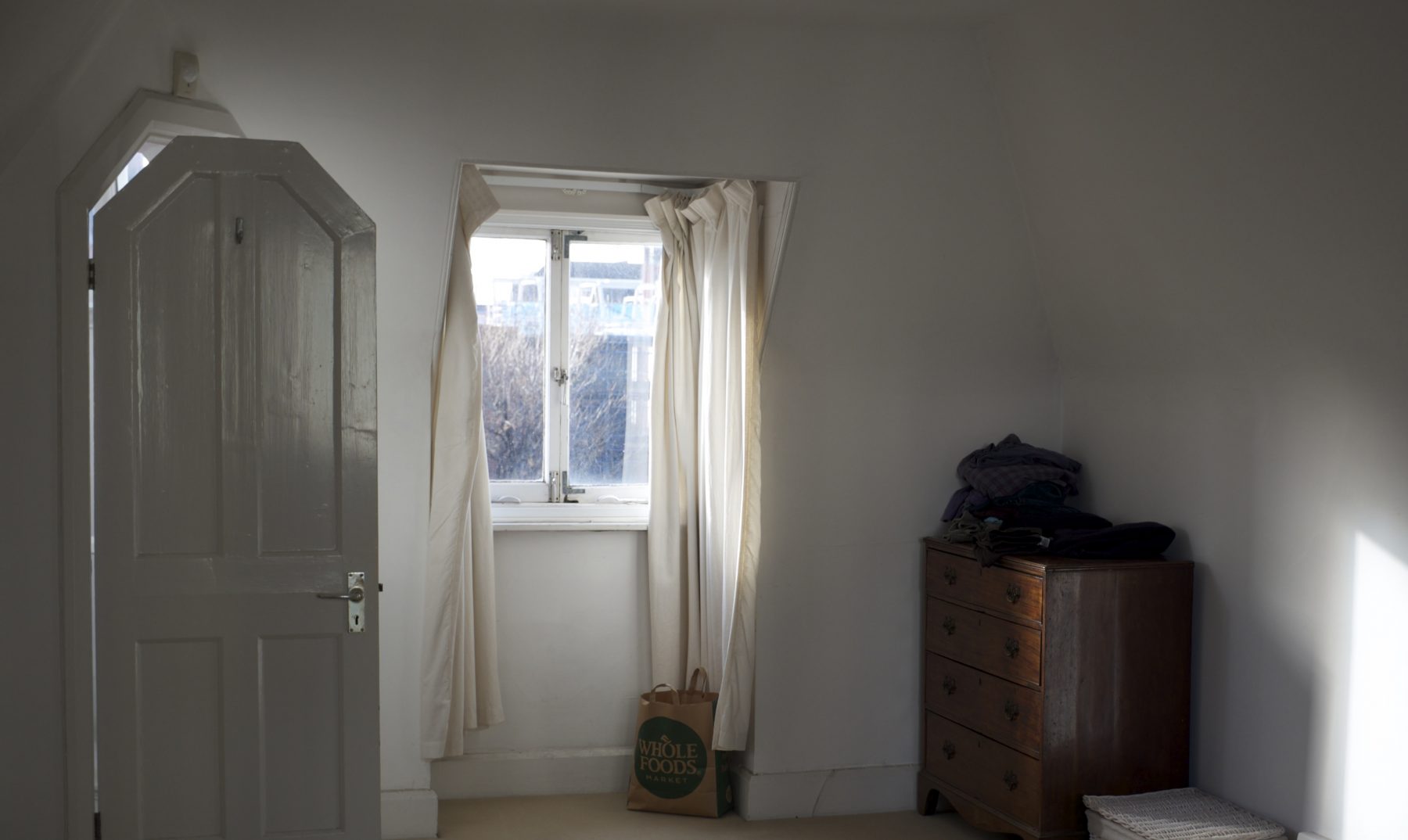
Shizuka Yokomizo|Today/Yesterday #1
14 Jan 2021
- Keywords
- Art
- Columns
- Photography
Today/Yesterday is a series of columns written by London-based artist Shizuka Yokomizo. She weaves together photographs and text to show us what she observes through her windows as the everyday gently changes. In this her first column, she tells us about a house in a West London neighborhood once known as an artists colony, where generations of artists have lived.
The bedroom on the top floor of this house has windows facing east and west. One morning, I noticed the vivid pink dawn sky seen through the large window on the east side, and took a photograph.
Awakened at dawn by the sound of a mewing cat, I couldn’t help looking at the sky as the day dawned. But then I became fascinated by the colors of the sky, changing with the weather, and would wake up even before the cat pitter-patted up the stairs.
This four-story house is a tall, narrow, tower-like structure whose floors are connected by a wooden spiral staircase. Seen from the bedroom window on the top floor, the sky seems to be at eye level. When I open the thick curtains, the left half of the window is occupied by a tall block of flats. Through the right half I can see the day’s skies: dark, ash-gray, powdery skies covered with clouds; skies the color of the ultramarine fountain pen ink; golden clouds floating in babbling pink skies.At the break of dawn, the colors filling the air are still slightly dark. My face, hands, tripod, and camera all seem dyed the same dim hue, as if covered by a thin veil.
After taking photographs with different exposures, I stare vacantly out the window. Before long, the morning’s first airplane is in my view, flying straight towards my window, then passing right above the house and gradually descending towards the west.
A few minutes later, more airplanes appear from all directions, crisscrossing the sky and slowly heading to the west, one after another.
This house in Fulham in West London was built in 1888 by the architect James MacLaren1 as a studio and residence for the sculptor H.R. Pinkes. It was subsequently the home of several generations of artists, the last of whom was the sculptor Kenneth Armitage, who died in 2002 and stated in his will that the whole building should be offered to an artist in residence. In 2017 it was offered to my partner, and my cat and I also lived there for two years and three months.
East London, where we lived before moving to this house, is now seen as a lively community filled with artists and others who work in creative industries. But in West London, Kensington and Fulham, and neighboring Chelsea, were once called an artists colony. Turner and Rossetti lived in this area. Around the same time that this house was built, Frederic Leighton built a luxurious studio and residence nearby. Many notable artists who played central roles in the history of the arts in Britain, lived there, including Kenneth Armitage, who was active in the mid-twentieth century.2
Even after living and working as an artist in London for a long time, I maintain a bit of distance from the centre of the British art scene. The large number of immigrants and the mixture of races and cultures make that art scene exciting, but the art world is more than the artists who create art. Its mainstay is the system and the people who have long supported art, and to them, for art to be “British” (however broadly we define “British”) art is very important.
I might be slightly put off by this attitude, yet I feel comfortable with the overall openness of the art scene in Britain and mainly stay on the fringe and produce what I would like. While I would describe my partner as British, he was born in Malaysia and is half Chinese, and his stance toward the art scene is not far from mine. Perhaps, that is why when told he could live and work in an historic studio and residence that had belonged to a sculptor so closely associated with British art history, he replied, somewhat dubiously, “What? Me?” When he told me the good news, my response was also, “What? Why you?”
Whereas this historic British house seemed a bit of a mismatch for us, as though we were the wrong heights, making the move there was quite simple, since we didn’t own our own place. And when we tried living there, we were happy to discover that this house, designed for an artist and built more than a century ago, was in fact well functioning, and very cozy.
The studio is directly below the residence. After breakfast, we’d make a cup of tea, and my partner would carry his cup downstairs to the studio. For my own work, I took over one corner of a room with a large window; it was once a painting room. At noon, my partner would come back upstairs for lunch. After lunch, we would go back to work again. Our lives flowed gently on. Even though our environment and the place we were living were different, our lives had hardly changed at all since we continued to do the same things. At that time, my partner was super busy preparing for several exhibitions. Between helping him out and doing my own work, I had little time to slowly look around, and think about the past occupants of the house.
Sometimes, I would go up to the library on the mezzanine floor, where the Armitage Archive was housed, to clean, dusting the bookshelves filled with an earlier era’s art books, technical books about sculpture, and novels. If I stepped outside the front door, I found myself walking on streets lined with luxurious brick residences reeking of old money, as if I were surrounded by a past totally different from contemporary London. I, who had no connection whatsoever with their past, felt like I had no place to call my own. But as the days went by, I found myself growing familiar with our building and naturally avoiding the squeaky parts of the wooden stairs and, when it rained, automatically moving things out from under pipes I was afraid would leak. As life and work became routine, and when I lost myself in the work, something hit me and I thought, “Ah, I see. ” There was no profound meaning to it. Day by day, I was trying to make progress on my work, and, when I was wholly absorbed in it, I might momentarily feel that I was doing the same thing as others were. Even though my thinking about art and the times was different from that of Armitage and other artists who had lived here before, we probably shared the same experience of frantically pushing hands and minds in one experiment after another over and over again.
As the light outside the window grew brighter and I watched color return to the landscape, I would think about how to incorporate this time I spent looking at today’s sky in my work. To simply accumulate a record of past moments would be only to engage in the environment around me, asserting the existence of memories of the past.
What I wanted was this present moment – my experience of taking photographs through the window of this house “now” – to be embedded in the structure of the work.
The solo exhibition that began in March 2020 and was closed because of the coronavirus, reopened in July. Two photographs of the dawn sky were hung on the wall at the entrance, one labeled “Today,” the other “Yesterday.” Every day the gallery’s assistant would remove “Yesterday” and replace it with yesterday’s “Today.” A new photograph of “Today” would be hung in its place. The act of changing the photographs every day was part of the work, and made it possible to maintain the “Now.” The gallery had a large window through which the photographs of the dawn sky could be seen from outside. Those who saw these photographs may have remembered them along with Tokyo’s sky reflected in that window on the day.
Editor’s Notes
1. Scottish architect. Moved to London in 1875, became a student at the Royal Academy School the following year. Was involved in designing residences before becoming an independent architect. Was involved for the rest of his life in renovating and designing churches, homes, and parks. Renowned as a pioneer in the Arts and Crafts Movement, he made major contributions to the development of vernacular architecture in Scotland.
2. Fulham was an area where ceramics and weaving had flourished since before the seventeenth century. In the latter half of the nineteenth century, Arts and Crafts Movement leader William Morris and many other artisans and artists lived in this area and had their studios there. Because of commissions from them, architects paid special attention to the need to combine studios and residences, and many buildings with these features were constructed in Fulham. Ten years before designing the residence where the writer lived, MacLaren designed another Fulham residence for artists. It was, unfortunately, never built.
Shizuka Yokomizo
Born in Tokyo in 1966, this artist lives in London. After majoring in philosophy at Chuo University, she did graduate work in fine art at University of London. Using photography and video, she creates works that explore relationships between self and the world and others.
